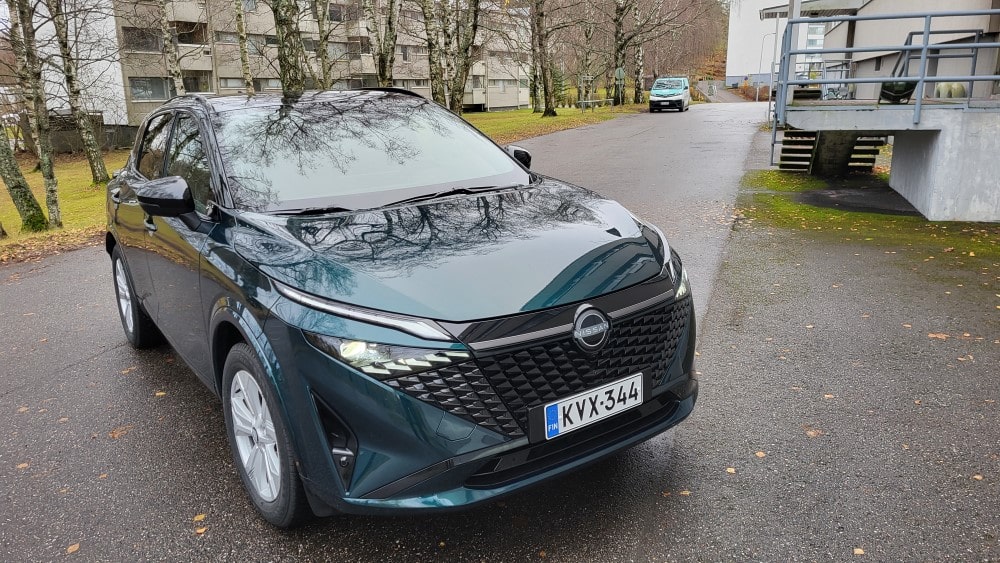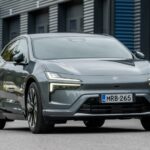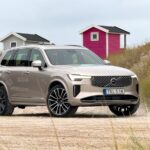Test drive and text by Juha Remes
Autotoday test drove the N-Design Nissan Qashqai hybrid for 2024.
The Qashqai’s redesigned appearance is streamlined and differs slightly from many other cars in its size class in its roundness. Several other models have more angularity.
The overall look of the car
The interior of the car appears elegant, with suede upholstery on the dashboard, handles and door trim. The impression of a plain plastic interior has been given a pleasing touch, and the look of the interior with elegant stitching gives a more dignified impression.
In interior design, appearance can sometimes take precedence over practicality, as suede can quite easily become covered in debris or lint from clothing. So cleaning can become more difficult over time. Ultimately, there may be a risk that the suede surface can go from looking stylish to looking more worn, but there’s no denying that it looks good when new.
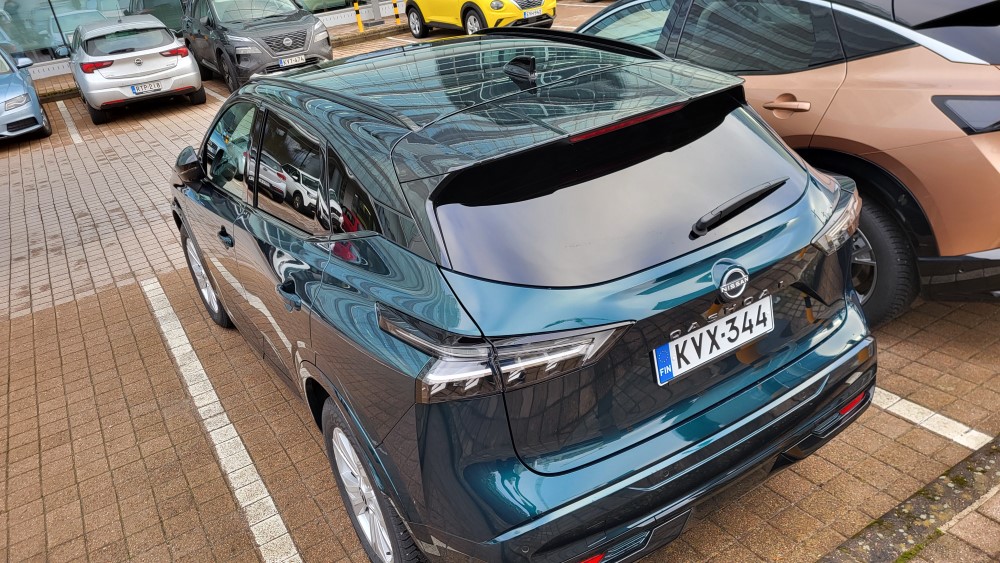
The instrument cluster and computer screen are clear, and the car has basic buttons for all the functions you need. Personally, I like the fact that you don’t have to search for basic functions on the computer screen with shaky fingers, as you might have had to do in the chilly autumn weather.
The car maintains a very clear balance in the control layout, with a split between the features behind the touchscreen and the essential control buttons. Behind the computer screen, there are many fine-tuning controls that allow you to tailor the car’s functionality more closely to your own wishes.
The logical Japanese design meant that no additional guidance or manuals were needed to familiarise yourself with the car, with everything you need to know about driving clearly available either around the steering wheel or on the front console.
The interior of the test car is commendably spacious, with comfortable room in front, between the front seats, and enough elbow room in the middle for both driver and co-driver. There is also an extra armrest in the front doors for extra comfort.
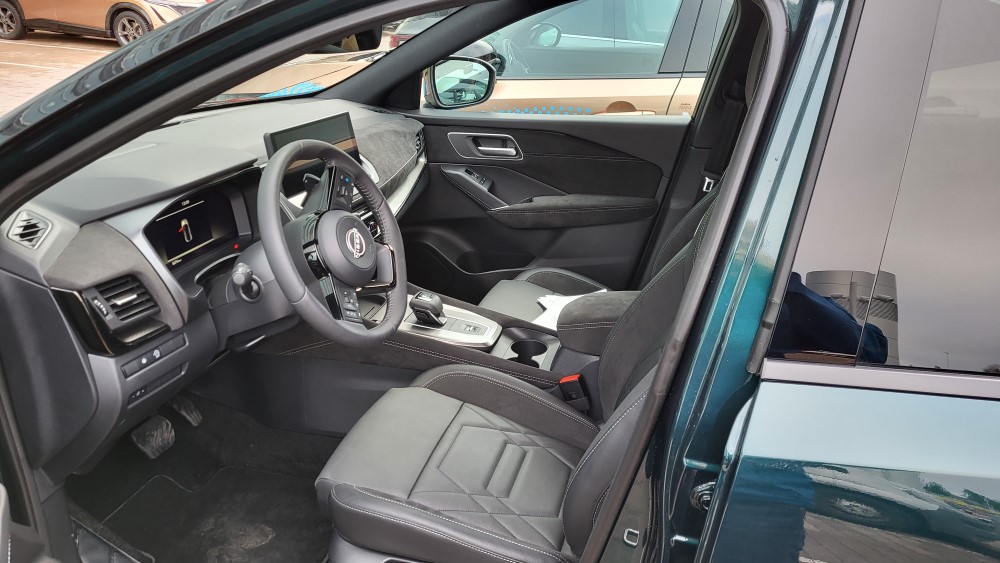
The car can easily accommodate four adults and there is enough space in the back for a longer journey. Of course, a third back-seat passenger can be fitted in the middle, but then legroom for the middle-seat passenger is more limited.
The side windows offer a comprehensive view to the rear.
The Qashqai has plenty of luggage space for a city SUV. A hockey bag fits easily in the back, and two with a little adjustment.
Equipment and pricing
The car is available in five different trim levels: the Acenta, N-Connecta, N-Design, Tekna and Tekna . The price difference between the cheapest and the most expensive version is €15 323, with significant differences in equipment packages between the models. Prices for the range start from €33 045 upwards.
The test-drive version, the N-Design model, is powered by a 1.3-litre internal combustion engine and assisted by an electric motor, which together produce a reasonable 115 kW of power. The car is front-wheel drive and there seems to be plenty of power at the start, especially when driving on wet road surfaces with slick tyres, the front tyres may spin for a while before the ride smoothes out. A total of 270 Nm of torque is available from the engines.
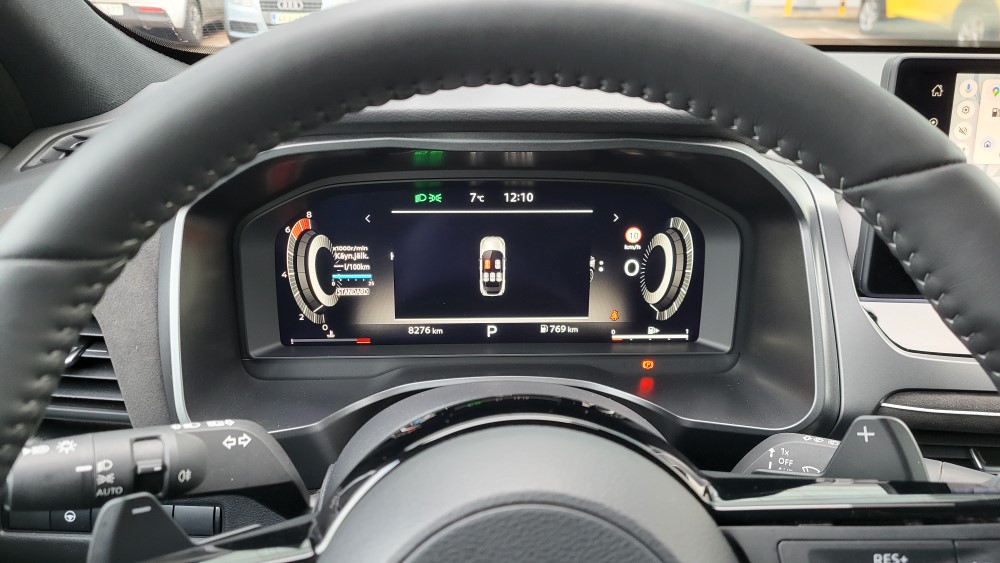
Performance is reasonable, with an acceleration time of 9.2 seconds from zero to 60 km/h and a top speed of 199 km/h. Acceleration remains adequate, but a little low compared to other similar newer hybrids. The top speed is certainly sufficient in Finnish conditions, but the overtaking acceleration could be a bit more brisk for Finnish country roads. Performance is ok, but acceleration is a bit better in many competing models.
The range of options on the test car included: heated steering wheel, built-in Google Maps and ApplePlay, NissanConnect 12.3-inch screen, suede upholstery with stitching, custom mood lighting, body-coloured bumpers, black roof rails, tinted rear windows, heated windscreen, intelligent cruise control, Propilot (auto-pilot functionality), Around View Monitor 360-degree camera system, 2-tone special colour Ocean Deep, electric folding rear-view mirrors, blind spot warning and cross-traffic camera view (view to help you enter the road at challenging junctions) “fish-eye”.
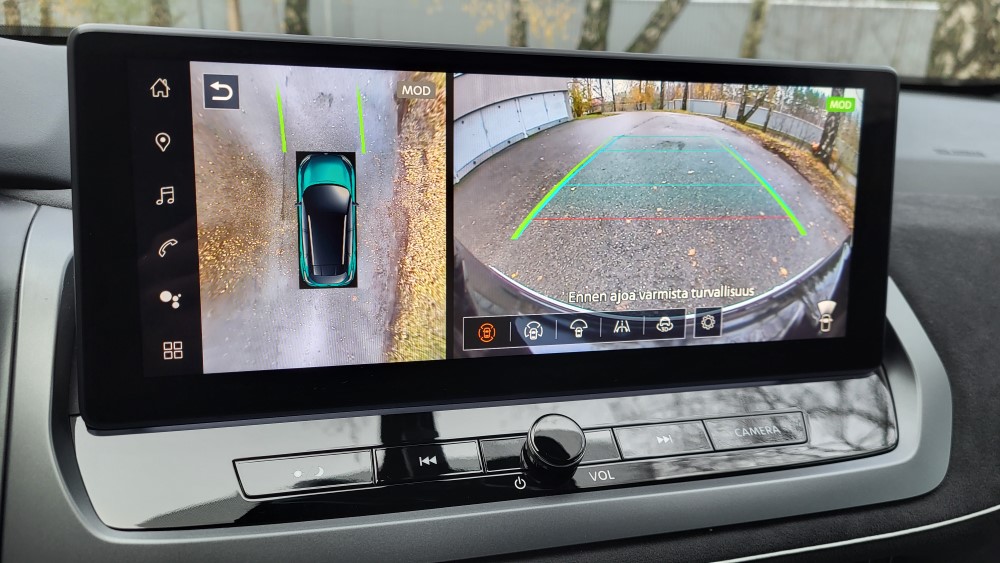
A very good set of equipment. The equipment packages in the different models, with the exception of perhaps the cheapest version, are quite comprehensive. Personally, I would have liked to see power front seats and a power tailgate in the test car. I didn’t think there were enough options for seat adjustment, and the tailgate opens quite high, and can be high, especially for a small person, when trying to reach in to close the hatch.
The Nissan Qashqai has traditionally been one of the most popular car models in Finland, having been on the market for almost two decades. You can certainly sign that on the basis of this test drive, and the Qashqai could be called the ‘people’s car’. It could perhaps be the ‘Saab’ of the modern world. The Qashqai meets all the basic needs and is competitively priced, not cheap but not expensive either.
In this context, the price tag of the test car ends up being €43,121, which is good value for money.
In preparation for the test drive
As with all the test drives I have carried out, I tried to do without manuals or driving instructions. The Qashqai was very clear, with button symbols in line with the industry standard, and all the essential switches within easy reach.
Navigation was also logical, for anyone used to using the Google Maps app, and who wouldn’t be, so finding your destination was a snap. The computer screen was large enough and adequately aligned with the driver’s view, without distracting from the driving.
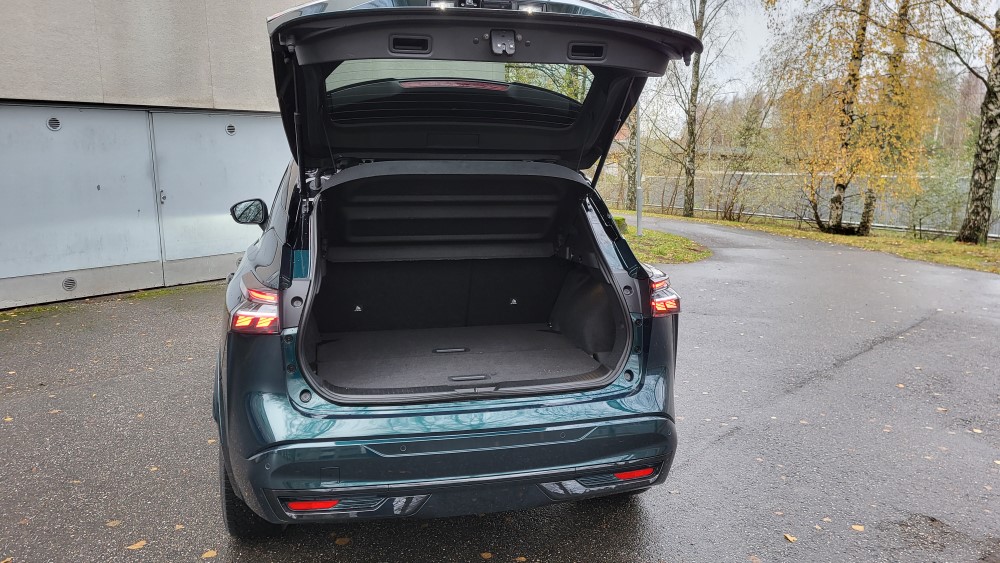
The driver’s seat is of a suitable size, but detailed driving position adjustments were quite limited, so electric adjustments would have been a welcome addition to the equipment.
There is comfortable space for the driver and co-driver, the elbow support on both sides matched the driver’s driving position quite well and the centre console also provides support for the co-driver, without much elbow clashing with each other.
The car sits high up, with good visibility in all directions. The rear-view mirrors are large enough and the visibility is very good. The rear view mirrors were folded up when I first got in the car, and there was a moment of confusion when they didn’t immediately fold out when I sat in the driver’s seat. The mirrors only straightened out when I started the car. Inside, the rear-view mirror was quite small, but it still gave a good view of the rear.
The car has three different program options [ECO] ([STANDARD] [SPORT]. To be honest, [ECO] seemed very dull and the throttle response was too slow for my liking. By selecting [Standard or Sport] the car responded much better to the throttle.
The test drive was carried out under varying conditions
Part of the drive took place in dark autumn conditions. The weather was quite cool and conditions were foggy. In the actual rain, we were only able to drive briefly, when we could see that the wipers were doing their job both in the front and in the rear
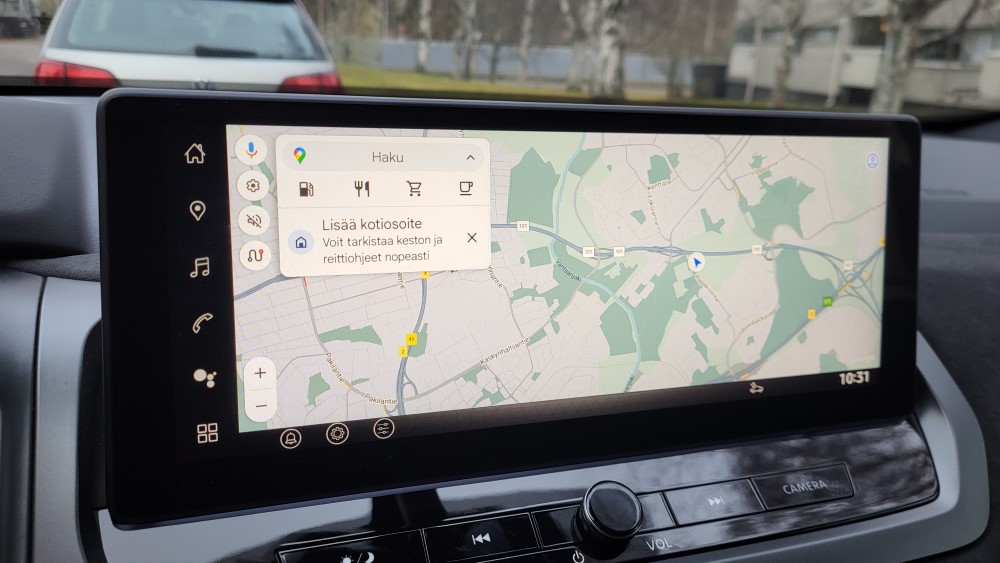
We drove on motorways, roads of various sizes, dirt roads and a very hilly cottage road. The fuel consumption was exactly balanced at 8.2 litres per 100 kilometres during the test drive.
In other words, the average consumption during the test drive differed quite considerably from the consumption figure quoted by the manufacturer. It is difficult to judge how conditions and the balance of city and road driving affect the car’s fuel consumption, but this figure is probably closer to the Finnish reality.
The car was comprehensively equipped, with cruise control combined with auto-pilot making driving almost automatic.
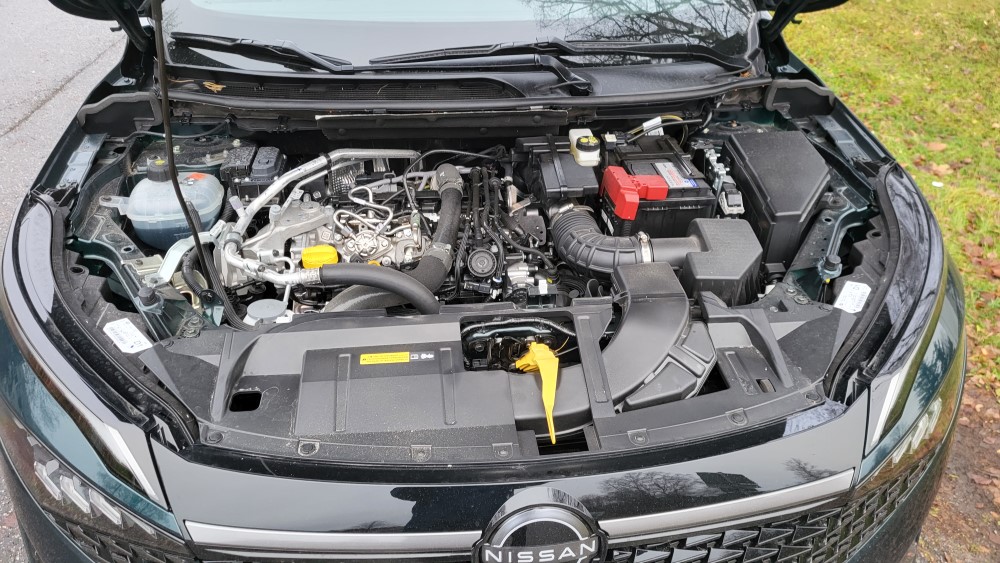
The auto-pilot control works, but it makes quite a lot of wobbly corrections on Finnish roads. I had the feeling that the young driver was behind the wheel for the first time, and driving the car is “driving” in the true sense of the word, i.e. the driver nervously jerking the wheel with small movements even on a straight road.
This may be a little annoying, but the corrective movements made by the autopilot are so small that it did not really seem to bother the other passengers.
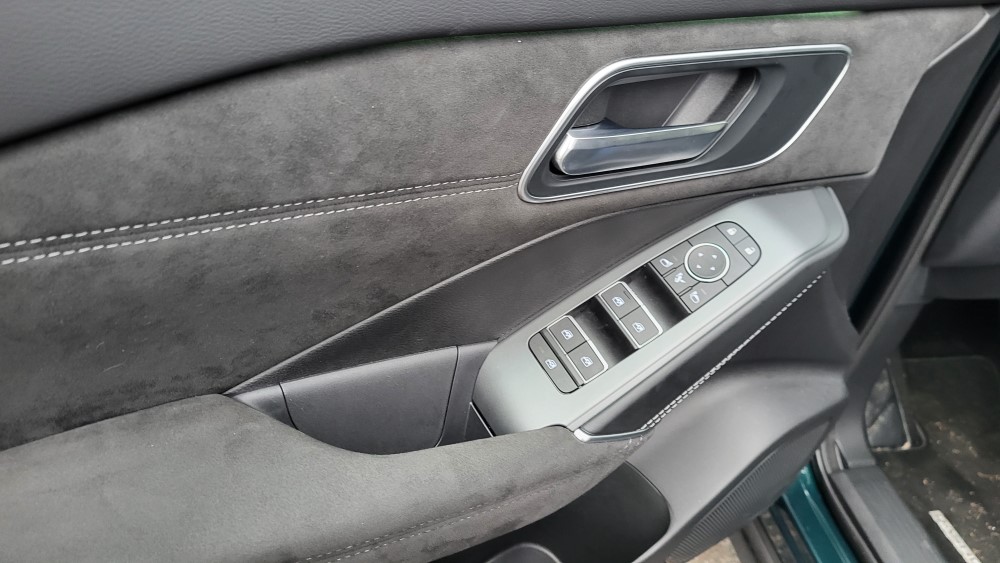
The car’s lights in the dark, foggy autumn were not the most effective, and if I had to travel more in the dark countryside in autumn, I would probably get extra lights to help. Of course, the lights are quite adequate when compared to the pre-LED era lights.
Drivability was very good in all different road conditions, both on dirt roads, as well as on winding Finnish asphalt roads and motorways. The uneven road surfaces didn’t bother me, the suspension is really stiff, maybe it might even be too hard for some drivers’ taste, but when driving in different conditions, this works well.
City driving was also comfortable, and the car is reasonably agile, with adequate turning radius. However, it should be remembered that this is a rather wide car, parking in the grids requires precision to ensure that both front doors open sufficiently.
The car’s adaptability to Finnish road conditions is greatly enhanced by its ground clearance. The high seating position improves visibility, while the windscreen is less exposed to dirt and debris from the road, which improves driving in different weather conditions.
Overtaking and acceleration were reasonable for Finnish road driving and overtaking at 100 km/h was also quite good, but perhaps the overtaking acceleration could do with a little more kick.
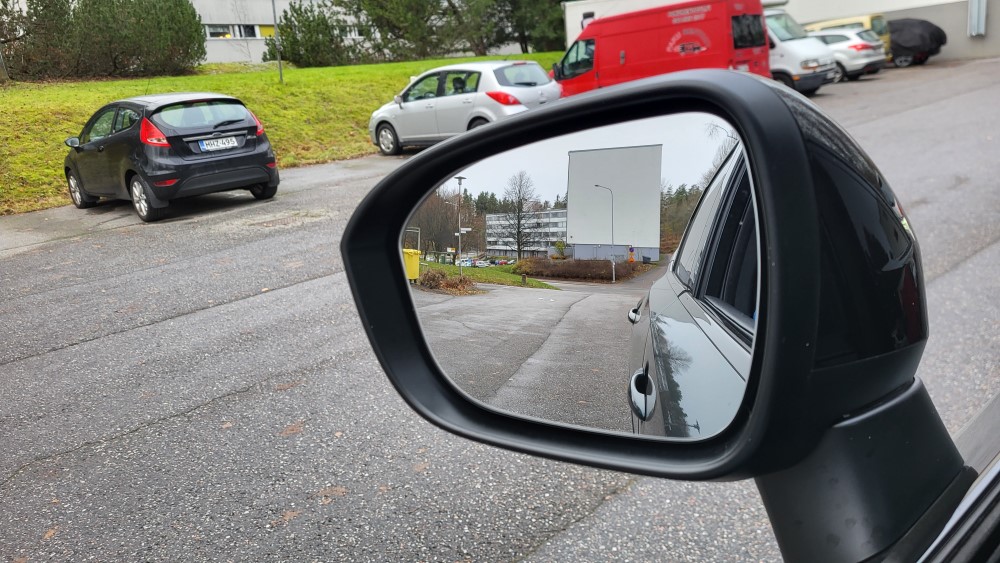
There’s a slight delay in the throttle response, which you notice when you try to accelerate quickly, but you get used to it and certainly for the character-conscious Qashqai driver, there’s even a bit more kick. The brakes are well balanced and the car slows down smoothly and efficiently, both on the road and in town.
When driving, there was little engine noise inside the car, and this revised model in particular has improved soundproofing. On the other hand, whether it was the brand choice of friction tyres, the tyre noise at 120 km/h was clearly noticeable.
The car’s 6-point stereo provided adequate sound reproduction, and tyre noise can be masked by increasing the volume on the radio.
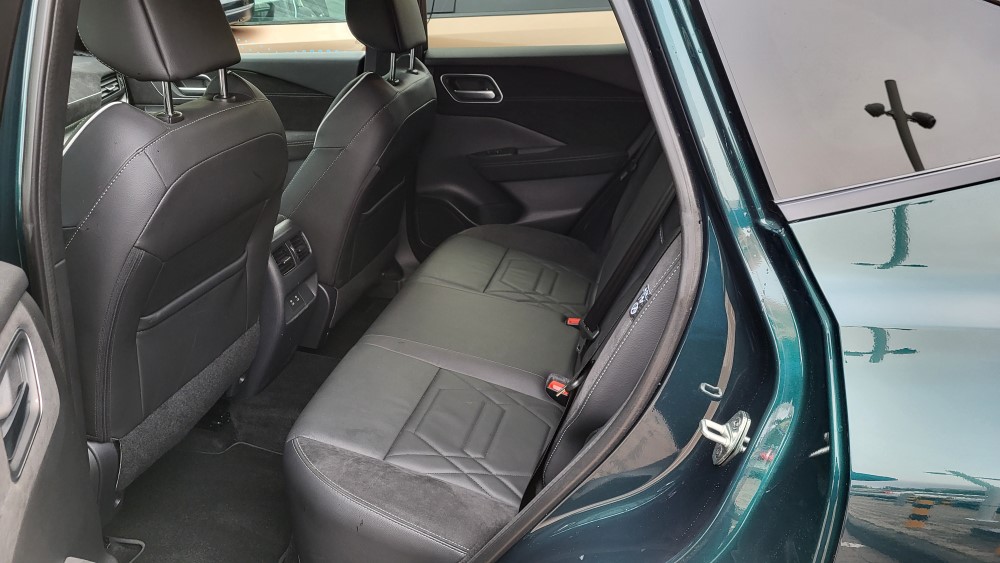
All in all, the car is a good ‘basic’ car for Finnish conditions, and it is particularly well suited if you drive in different types of road conditions every year. The journey is smooth up close and beyond. Everything works and the overall package has everything you need. The car is not cheap, but it is in the right scale.
Other observations from the test drive
One detail that needs attention came up when washing the car. Typically in an automatic transmission, setting [D], [P] and [N] are easy, but in this model, shifting into neutral was not a given. When I drove to the car wash, there seemed to be no way to find the [N] position, between [P] and [D].
I should have known that it would require pressing down the button on the left side of the gear stick for several seconds before the N position would lock. So it’s worth trying this before you drive into the washing machine to avoid any nasty surprises.
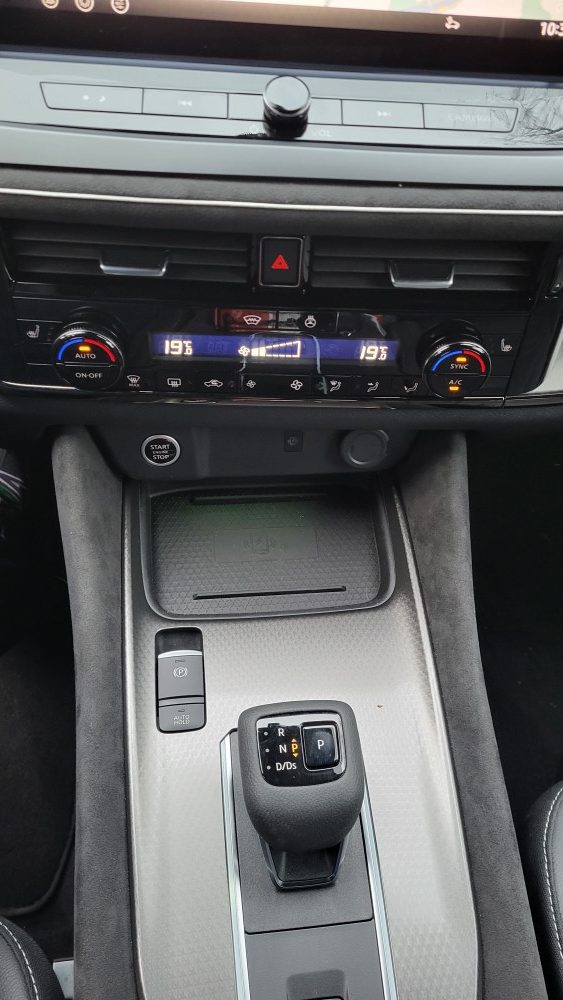
Summary
All in all, the N-Design test drive was an experience that didn’t cause any surprises or disappointments, it lived up to what one of Finland’s best-selling car models could contain.
Winter driving was not yet available, but I’m sure it will be fine. The car wasn’t made to be a shopping bag either, as it’s quite large, and requires space in the parking grid.
If you’re looking for a car of this size, it’s definitely worth a test drive.
Nissan MHEV Xtronic 2WD N-Design
- Combustion engine power: 1.3 litres, providing 116 kW (158 hp) of power when combined with the electric motor.
- Maximum engine torque: 270 Nm.
- Acceleration: 9.2 sec (0-100 km/h) and top speed 199 km/h
- Manufacturer’s combined fuel consumption: 6.2-6.4l/100km (CO2 emissions 141-144g).
- Fuel tank capacity: 55 litres
- Deadweight: 1985 kg.
- Luggage compartment: 455-504 l.
- Traction: front-wheel drive
- Wheelbase: 2665 mm
- Length: 4425 mm, width: 1848 mm (with mirrors folded) and height 1625 mm
- Ground clearance: 175 mm
- Towing capacity: 725 kg (unbraked trailer)
- Starting price: EUR 33 045
- Price for test drive: €43 121
